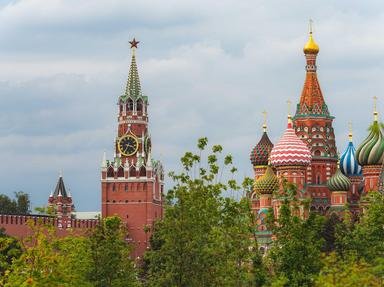Quiz Answer Key and Fun Facts
1. At the beginning of his reign Peter I was not the sole ruler of his empire but, in principle at least, was Tsar jointly with his half-brother. This system was retained until the latter died. What was his name?
2. St Petersburg was constructed by Peter I in 1703 and became the capital of Russia in 1713. On which body of water (excluding Lake Ladoga) was the city constructed?
3. Catherine II is one of the most noted Russian monarchs despite the fact that she was of foreign birth. From what country did she hail?
4. In the early 19th century Europe was nothing but a warzone. This can be attributed to the French emperor Napoleon I. In 1805, the Russian and Austrian armies were defeated in this battle. Which?
5. The Continental System was introduced by Napoleon to prevent the British from trading with Europe. However, the only major power, Russia, outside of his control refused to comply with the system. This led to Napoleon's famed invasion of Russia. In what year did this occur?
6. In 1848, Europe was ravaged by internal strife due to revolutionary conduct. The revolutionaries almost won in some countries. However, the revolt in the Hungarian part of the Austrian Empire was soon crushed after this Tsar mobilized Russian forces to aid the Habsburg monarchy. Which of these was it?
7. The Crimean War was waged in mostly in the Baltic and Black Seas. However, the main battlefield was on the Crimean peninsula. British, French, and Sardinian forces laid siege to this city on the peninsula from 1854-1855.
8. In 1809, Alexander I fought a war with the neighboring Kingdom of Sweden and obtained an autonomous province. What was the province?
9. The last acting Tsar of Russia was Nicholas II. He was shot and killed with the rest of his immediate family in Ekaterinburg in 1918. Before the February Revolution however, he bestowed the title on his son, who in turn named which man the last "Tsar" of Russia?
10. Who led the October Revolution of 1917, and was leader of the Soviet Union from 1922-1924?
Source: Author
Red_Trotsky
This quiz was reviewed by FunTrivia editor
bloomsby before going online.
Any errors found in FunTrivia content are routinely corrected through our feedback system.
